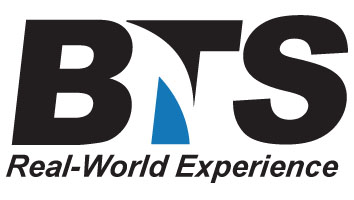| DMS-10 System Maintenance and Troubleshooting Virtual Live Instructor-led or Available On-Site |
 |
Module 1: Switching Fundamentals
- T&R, E&M, 2/4/8 Wire Circuits - Negative Talk Battery
- AC & DC Superposition
- Decibels
log scale
copper, optical
- Digital: A/D & D/A Conversion
Nyquist Theorem
Multiplexing Samples
PCM bit depth - 8 bit, 10 bit
Binary & Hexadecimal overview - Time Division Multiplexing (TDM)
Pulse Code Modulation (PCM) Line Coding
DS0/1/3
DS-30, DS-512
- Transport: AMI, B8ZS, OC-x, STS-x
- Stored Program Control (SPC)
- Time-Space-Time
Module 2: DMS-10� Theory of Operation - DMS-10 Topology
- Functional Block Diagram
- Time Stage/Peripherals
- Space Stage/Network incl. different matrix varieties
- Hardware Modules (400, 500 and 600 series):
CPU - 3T98, memory options, SDI/terminals
IOI/GPIO: MO, 8T90 disk drive units, tape
Network (Classic, CNI), MLI Interface, DS-x/PELP links Alarm, Ring Monitoring
ME-CCS
CE/PE Equipment (line, trunk incl. PSHF, DCM, etc.) LCM/LCME (various types), LCA, Drawers, ISDN
Remotes - RLCM, OPM, ESA Option, etc.
- End-to-End Call
- SS7 Overview
Module 3: Terminal Access - TTY
- TTY0 & 1, EIO, SMDI
- System Passwords
- Login, Logout
- Resident Commands
Sample RES Commands - Overlays
Why Overlays?
Sample OVLY Types
Examples
- Basic Command Structure
- Telnet (SHEL), RTOS UNIX shell
- NTP 297-3601-300 - Input/Output System
Module 4: Commands
- Logi, Password, ####, ?, ****, Logo
- Resident (RES) Level: LOGI, DEBG, OVLY, QUE, TIME, MSG, STAT, etc. - OVLY: ALO, CED, CKT, DED, DN, IOD, PED, etc.
- CKT - LIST, STAT, BUSY, RTS, etc.
- CED - CLK, CORE, XTDR, etc.
- Critical, Major, Minor indicators
- NTP 297-3601-903 - Output Message Manual
- Examples
Module 5: Documentation
- Helmsman v4.x
- CD-ROM, Server, Virtual Machine
- Nortel Technical Publications (NTP) - 297 Series (issues may vary) 297-3601-100 - General Description
297-3601-150 - Equipment Identification
297-3601-311 - Data Modification Manual
297-3601-316 - DIP Switch Settings
297-3601-511 - Maintenance and Test
297-3601-902 - Pocket Guide
297-3601-903 - Output Message Manual
- Job Site Documentation
J - Equipment Assembly
IS - Interconnect Schematic
SD - Schematic Diagram
- Examples
Module 6: Maintenance
- Using the LIST Command: LKOT, FALT, BUSY, etc. - Lines:
PE (2T0x)
LCE (6X17)
HAZ
- Trunks:
PE (6X30/31/32)
CE (6X50)
- Locating Cards:
QUE
Examples
- Replacing Line Pack: 6X17
- Replacing Ring Card: 3T59 vs. 6X30
- Test:
PE (2T14, 2T19, 2T72)
RA (2T85)
OVLY TLT: Line Testing, LIT
- System Images: DUMP MO
- (Optional) Basic Translations:
OVLY CPK
NEW LPK (DEL)
OVLYDN
NEW STN (DEL, CHG, QUE)
OVLY ROUT
- (Optional) OVLY ALRM & Alarm Points - Exercises
Module 7: Troubleshooting
- NOC/SCC Interaction
- ESD Precautions
- Examples:
TTY0 Connectivity, DSDI
MO0 Card Change, Format HD Card Change, BKUP
- Alarm Investigation: LIST ALM
ALPK
LIST ALL
STAT
- CLK: STAT SYNC
- OVLY SHEL
ARP, Ping, TELN
- Emergency Procedures (EP): Cold Start Example
- Student Examples
Module 8: Translations Introduction (Optional Content)
-Lines/DNs
Service Order Commands (ACT, ADO, DEL, DLO, MOV, NEW, etc.) Create a Line Pack
-Trunks OVLYTG
OVLY TRK, QUE TRK
-Tracing
Translation Tools and Tables OVLY CLI
OVLY TRAC
TRVR, OVLY QTRN
OVLY SND
BTS always provides equipment to have a very successful Hands-On course. BTS also encourages all attendees to bring their own equipment to the course. This will provide attendees the opportunity to incorporate their own gear into the labs and gain valuable training using their specific equipment.